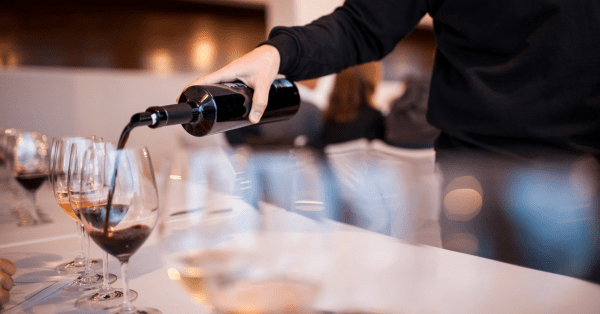
How to Taste Wine – The Stages of Wine-Tasting
You open a bottle, you pour the wine, you raise the glass, you taste it. Simple, right? There’s actually a bit more to it than that. To get the most out of tasting wine, if you take a more methodical approach, you can better describe and appreciate each wine’s unique qualities. The three main aspects to consider are: appearance, nose and palate.
Appearance
The main characteristic is color, but it’s not just red, white or rosé. Grape varieties have different color characteristics, varying in intensity and hue (color shade). For example, white wines range from pale straw yellow, through to the rich deep yellow, gold color of a sweet Sauternes, or an amber. A rosé’s color mostly depends on how long the crushed grape skins are left in contact with the juice before separating, and intensity varies, perhaps pale pink, like a rose petal, or a darker salmon pink.
Hold your glass up and look at the wine. Red wine might be deep ruby red or garnet, or might have purple or tawny brown tones. Many Bordeaux wines will be more of a deep ruby color, due to the predominance of Cabernet Sauvignon and Merlot grape varieties.
Nose
Swirl your glass and smell. What do you notice? The primary aromas and flavors in white wines might include floral fragrance; green fruit, maybe apple, pear, gooseberry; peach, nectarine or apricot stone fruit; citrus or tropical fruits. Red wines might evoke red fruits, such as redcurrant, raspberry, strawberry, or cherry; or maybe black fruits like blackcurrant, blackberry, or blueberry; or perhaps spices like pepper or licorice.
Secondary aromas and flavors include yeast, maybe biscuit or bread, often associated with Champagne; or flavors associated with oak, such as vanilla, cedar, smoke or chocolate. And finally tertiary aromas, which develop during the maturation process, and which include dried fruit, leather, mushroom, almond and honey.
Palate
The palate involves the flavors associated with those primary, secondary and tertiary aromas described above. Swill the wine round your mouth. What fruits, etc, can you taste? Additionally, palate relates to sweetness, acidity, tannin, alcohol, and body.
Wines range from dry to medium to sweet, perhaps white white from Bordeaux’s Entre-Deux-Mers region, which is known for its dry white wines, or a sweet white wine from Sauternes or Barsac. Red wines are usually dry, although they can be sweet, with fortified wines like port. Acidity applies to both red and white wines, whereas tannins relate to red wines. Grapes grown in cooler areas tend to have higher levels of acidity, also unripe grapes, although their acidity levels fall as they ripen. Acidity and tannins are especially important when it comes to pairing wines with different foods.
Tannins come from natural polyphenols in the grape’s skin, seed and stem. Because skins are separated from juice before white wines are fermented, tannins are usually found in red wines. If, when you roll the wine round your mouth, your tongue and gums start to feel dry, that’s the tannins, adding complexity to a wine. ‘Old World’ wines tend to have more tannins, which can give rise to a velvety, silky-smooth mouthfeel.
Alcohol levels in wines range from 5-15 per cent, and fortified wines are 15-25 per cent strength. Some wines are low alcohol or specially processed to de-acoholize them. Very generally speaking, wines are often said to be fuller-bodied if they have lower acidity levels, higher tannin and alcohol levels, and also thicker viscosity. Many Bordeaux red wines could be described as medium-to-fuller-bodied.
Wine tasting is a lot about personal preference. Everyone’s taste buds are different. Different people have different preferences. Someone who’s a bit of a wine-lover might express a general preference for white wine, or rosé, or red. An aficionado might say they prefer French red wines over Australian or Californian ones, or vice versa. Or then again, there are connoisseurs who will say they prefer Bordeaux Right Bank wines over Left Bank wines, or the other way around. There’s no right or wrong answer, in that sense, so get tasting and exploring, have some fun, and find the wines that you prefer.
If you’d like to explore the wines of Bordeaux, you can book a private, customizable wine tour via Bordeaux With Elodie. Come and try some white, rosé and red wines here, take a trip to the Left Bank, or Right Bank, or Entre-Deux-Mers. If you want to visit specific appellations like Margaux or Saint-Emilion, or specific chateaux, that can be arranged too. There are plenty to choose from here for a truly memorable trip.

